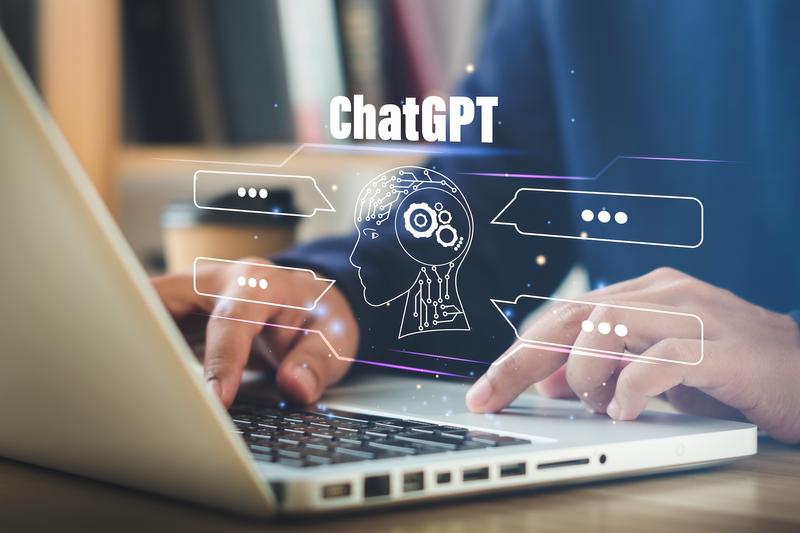Unlocking the Power of ChatGPT with Ruby

Are you looking to harness the power of artificial intelligence and machine learning to streamline your coding workflow? ChatGPT and Ruby are two powerful tools that can help you do just that. However, if you’re new to these tools, getting started can be daunting. That’s where our beginner-friendly guide comes in. In this article, we’ll take you through everything you need to know to use ChatGPT with Ruby, from the basics of integration to more advanced features. Whether you’re a seasoned developer or just starting out, this guide will help you unlock the full potential of these powerful tools and take your coding skills to the next level.
Before you start integrating the ChatGPT API, you need to register for an API key and obtain your credentials from the ChatGPT website. To do that, follow this page.
Create the following class in your Ruby On Rails or any other Ruby-based project:
class OpenaiPrompt
extend Dry::Initializer
URL = "https://api.openai.com/v1/completions"
param :prompt
option :model, default: proc { "text-davinci-003" }
option :max_tokens, default: proc { 1000 }
option :temperature, default: proc { 0 }
def call
connection =
Faraday.new do |faraday|
faraday.ssl[:verify] = false
faraday.headers = headers
end
response = connection.post(URL, body)
json = JSON.parse(response.body)
json["choices"].first["text"]
end
private
def body
{
model: model,
prompt: prompt,
max_tokens: max_tokens,
temperature: temperature
}.to_json
end
def headers
{
"Content-Type" => "application/json",
"Authorization" => "Bearer #{ENV['OPENAI_ACCESS_TOKEN']}",
"OpenAI-Organization" => ENV['OPENAI_ORGANIZATION_ID']
}
end
end
You can define your ChatGPT class within an existing file or create a new one specifically for it. However, it is generally recommended to create a separate file for your ChatGPT class for better organization and modularity of your code. This makes it easier to find and modify your ChatGPT code in the future without affecting other parts of your project. If it’s a Ruby On Rails application, app/services/openai_prompt.rb is a good file location for this piece of code.
This class has the following dependencies (gems) that should be added to your Gemfile:
-
faraday- This is a handy library that provides an abstract interface for making HTTP requests. It simplifies the process of making requests to external APIs and handling responses. -
dry-initializer- This library allows you to define thenewmethod implicitly, reducing the amount of repetitive code required. This makes it easier to create new instances of your class without having to manually define instance variables and their default values.
To use the OpenaiPrompt class, you first need to define the environment variable OPENAI_ACCESS_TOKEN. If you have multiple organizations registered within ChatGPT, you can also define the optional OPENAI_ORGANIZATION_ID environment variable.
Once you have set these environment variables, you can use the OpenaiPrompt class from any line of your project by simply calling OpenaiPrompt.new('Why is Ruby an awesome programming language?').call.
Here is an example of how you can use the OpenaiPrompt class in a Rails console:
> OpenaiPrompt.new('Why is Ruby awesome programming language?').call
> # => "\n\nRuby is an awesome programming language because it is easy to learn and use, has a large and supportive community, and is highly flexible and powerful. It is also object-oriented, meaning that it allows developers to create complex applications quickly and easily. Additionally, Ruby is open source, meaning that it is free to use and modify. Finally, Ruby is known for its readability, which makes it easier for developers to understand and debug code."
ChatGPT offers a wide range of functionalities and models that can be utilized in various ways, not just limited to answering common questions. For instance, you can leverage GPT-3 to generate text for creative writing, content generation, or chatbot responses.
The OpenaiPrompt class serves as an example of how you can use ChatGPT to answer common questions programmatically. However, the same principles can be applied to build other classes that utilize ChatGPT’s other capabilities.
Furthermore, integrating ChatGPT with a user interface, such as a web form or a chatbot, can allow users to ask questions and get responses in a more intuitive manner. This can be particularly useful for applications that require natural language processing and understanding, such as customer service chatbots or virtual assistants. By integrating ChatGPT with a UI, you can make it more accessible and user-friendly for non-technical users.
If you have questions or need to integrate ChatGPT into your Ruby On Rails or any other Ruby-based project, please contact.
